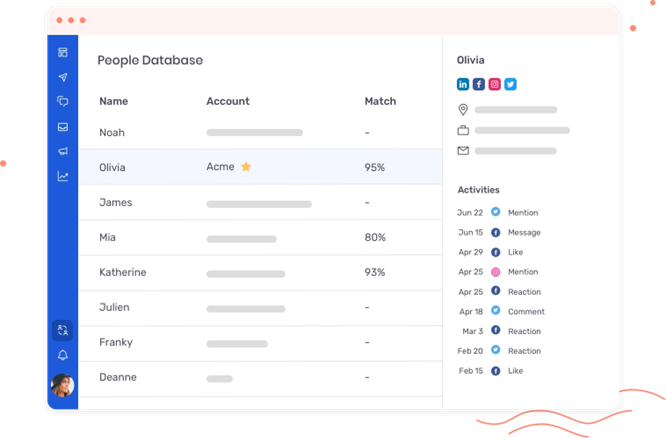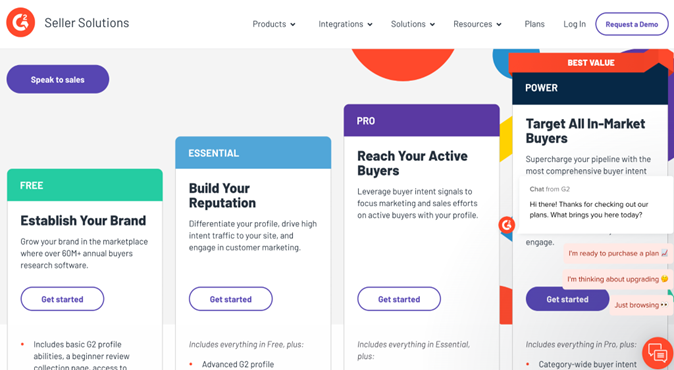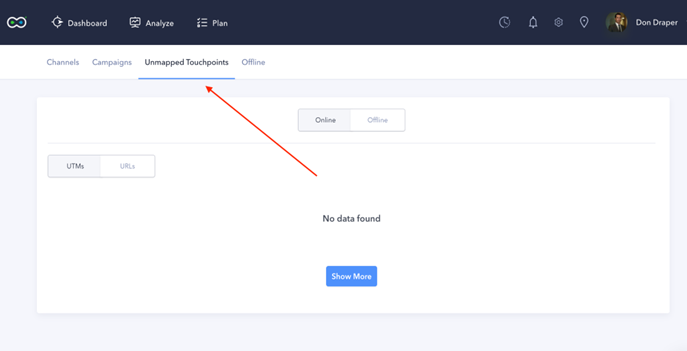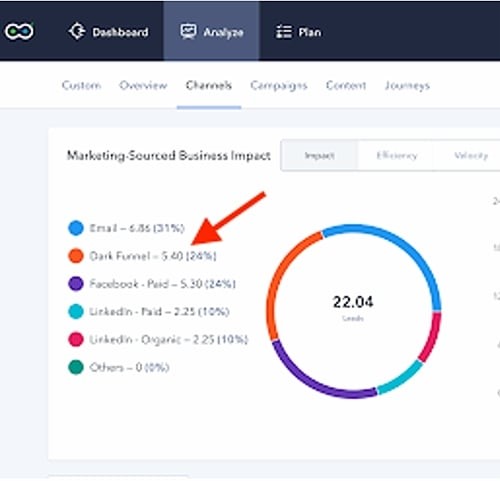Read Article 1 of this series here.
In Part 1, we explored why the dark funnel poses a challenge for B2B marketers who use attribution to measure their activities, and we suggested a unique solution: Instead of throwing the baby out with the bathwater and giving up on attribution altogether, we can divide the dark funnel into measurable and unmeasurable parts and implement a holistic marketing measurement approach that improves how we handle each part.
In Part 2, we'll cover four steps you can take to implement that holistic strategy:
Step 1: Measure the measurable dark funnel.
Step 2: Isolate and monitor the unmeasurable dark funnel.
Step 3: Launch ongoing efforts to measure the dark funnel.
Step 4: Don't ignore your intuitions—turn them into data.
Step 1: Measure the measurable dark funnel
Let's go over a few examples of the measurable dark funnel and explore ways of potentially shedding light on them.
1. Monitor social interactions

Source: Oktopost
People may often interact with your LinkedIn or Twitter posts. At first, those interactions seem like part of the unmeasurable dark funnel because those people don't visit your website and therefore don't activate a pixel.
However, there are creative solutions to that problem. For example, you could connect a social engagement platform such as Oktopost to your HubSpot or Salesforce account. That way, every engagement with a prospect is registered as a recognizable and attributable touchpoint which you can connect to your attribution solution to see how "dark social" affects your company's bottom line. This is an especially powerful tactic if you're running an ABM program.
Many similar social monitoring platforms, including Mention and Meltwater, can inform you when someone mentions your brand, making that previously unnoticed interaction recognizable.
2. Subscribe to the paid version of review sites

Review sites such as G2 are another example of places beyond your control where potential customers may learn about your product or service.
On many of those sites, you can subscribe to a paid account and get more information about the visitors who have read about you, You can even convert some of them into leads and account for intent touchpoints in your attribution analysis. It's well worth taking some time to check out what you can do and what data is available to you there.
3. Formalize your UTM structure and map it

As a busy marketer, you are likely running multiple campaigns at once, and your whole organization and network are promoting them. The chances that some of those people will use the wrong UTM structure are high.
In general, inconsistency in UTM structure, as well as failure to use UTMs, is common. Inaccuracies in UTMs can blow up your direct traffic numbers, causing a tidal wave of incomplete data.
To combat that problem, you can work on filling your unmapped UTMs and on educating your organization and network about the proper use of UTMs and bit.ly.
Besides structuring UTMs, you should explore which UTMs aren't correctly mapped by your system, then correct the mapping. You wouldn't believe how common UTM mapping inconsistencies are, even in the most meticulous and organized organizations.
Putting the right UTM mapping processes and software in place, in conjunction with educating your marketing team about the importance of UTM consistency, can correct the issue.
4. Implement self-reported attribution ("How did you hear about us?")

You may be familiar with the current social media buzz around going back to measuring marketing through a "Where did you hear about us?" form.
Instead of using manual and bias-prone surveys as a replacement for attribution, I believe it's much better to incorporate it as part of your ongoing efforts to shed light on and measure your dark funnel.
5. Run statistical correlation analysis
Using statistical correlation analysis, you can identify the performance uplift resulting from budget changes over time. This is like incrementality testing, only automated.
As in the case of self-reporting, you should use correlation analysis in addition to your attribution analysis. It can work especially well for nonattributable activities (AKA dark funnel activities) and serve to increase analysis coverage and shed light on those activities.
Incrementality testing involves using a test group that is exposed to a marketing channel while a control group is kept aside for analysis. By measuring the results from each group, you can pinpoint the conversions that happened because of the channel you tested. That uplift is called the "incremental lift."
It is extremely difficult to maintain so many experiments. But, even if you don't have the resources to run a complete incrementally testing analysis, do invest the time in identifying trends, at the same time comparing budgets and performance over time.
Step 2: Isolate and monitor the unmeasurable dark funnel

To handle the unmeasurable part of your dark funnel, you first need to bundle the relevant sources together (including direct, paid, and organic brand searches) and name them inside your attribution software. You can put them under a channel named "Dark Funnel," for example.
In the future, you may find other sources to add to that channel, such as a LinkedIn ad conversation or a search for a new category that you have established.
Bear in mind that this is just an assessment as opposed to an accurate measurement of your dark funnel. However, it will give you a benchmark that can be used to monitor month-over-month changes.
Moreover, you will be able to analyze customer journeys and include your dark funnel as one of your touchpoints.
Step 3: Launch ongoing efforts to measure the dark funnel
As a marketer, it's your job to find creative approaches and workarounds to get the information you need. Illuminating your dark funnel is no different.
Imagine you're standing in a dark cave with a lit candle. It illuminates just a couple of feet around you, but no further than that. Does that mean you should throw away the candle entirely? Or should you find a solution, like walking with the candle into the darkest corners of the cave, lifting it above your head, or extending it outward to allow its light to reach further?
Most, if not all, dark funnel channels can be illuminated if you put in the effort and get creative.
However, there is a point where the effort required to shed light on these dark funnel channels is greater than the benefit you derive from having a more accurate attribution. You should always be aware of the delicate balance of striving to reduce the darkness while maintaining a focus on your main marketing efforts.
Step 4: Don't ignore your intuitions—turn them into data
The last step is actually the most interesting one: decision-making!
Combine your analysis insights with your assumptions and intuitions, and arrive at the most logical and optimal next step.
Your goal for this entire process should be to gather as much information as you can. To do that, I suggested some experimental methods, but those are not the only methods you can employ.
If, for example, your initial assumption was that your weekly podcast is an important part of your buyer journey, you can now study its impact much more closely than before.
A key part of being a marketer is having good intuition. By reducing the unmeasurables, you're not dismissing intuition, but the opposite: You're giving yourself tools to improve and refine your intuition so you can make the right decisions.
* * *
Attribution and measurement, although not perfect, are essential elements of any robust analytics strategy or revenue marketing program. Investing in them is necessary for today's dynamic and competitive markets.
Don't dismiss attribution because of the dark funnel; rather, develop a holistic dark funnel strategy to account for it.
More Resources on the Dark Funnel and Marketing Attribution
It's Time for Chief Market Officers to Play Offense
Four Steps for Successfully Implementing Marketing Attribution
Attributing Conversions to Campaigns: What Can Attribution Do for Your Marketing?




